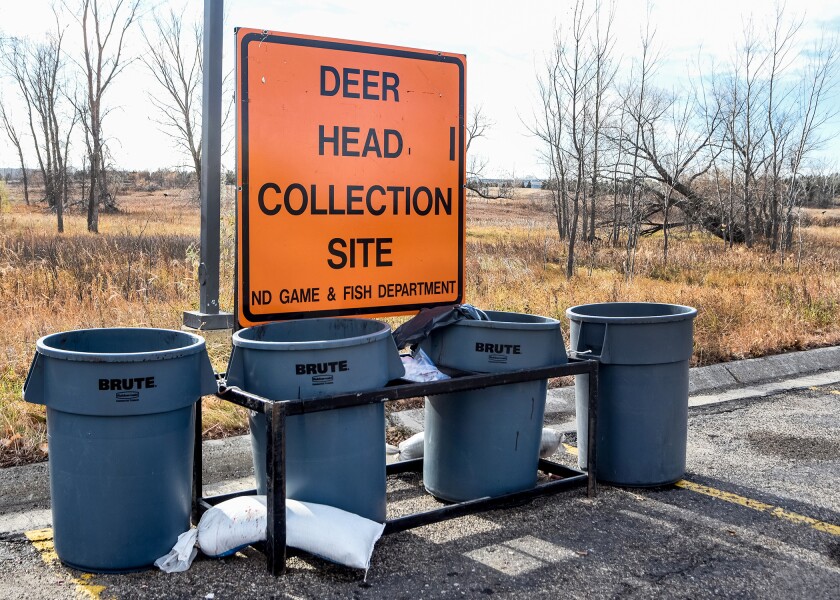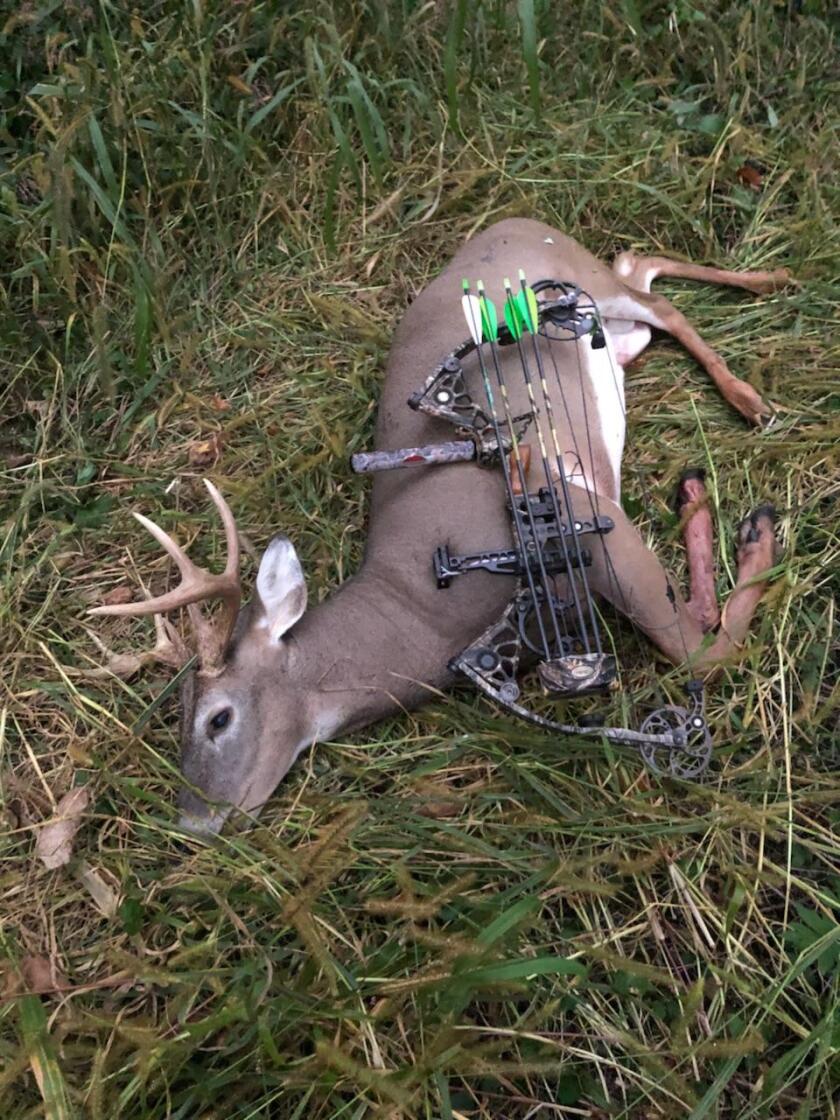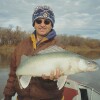GRAND FORKS -- The COVID-19 pandemic forced wildlife agencies last fall to scale back their efforts to test for chronic wasting disease, the fatal neurological disorder that affects deer, moose and elk.
As a result, fewer hunters in areas with documented cases of the disease submitted deer heads for testing in areas targeted for voluntary surveillance, which in turn meant wildlife managers may not have gotten an accurate picture of what’s happening with the disease.
That was the case across the country, said Dr. Michelle Carstensen, Wildlife Health Group leader and acting wildlife research manager for the Minnesota Department of Natural Resources.

ADVERTISEMENT
“All of them that I know of – but I’m just going to say most – found their sampling was down, and the level of hunter participation was down,” Carstensen said.
In North Dakota, as few as 3% to 4% of hunters submitted deer heads at drop sites the Game and Fish Department set up in hunting units where voluntary testing was in effect. The department tested about 2,600 animals in all or parts of 12 hunting units targeted for testing, finding 18 new cases of the disease, for a total of 44 since CWD first was detected in the state in 2009.
Overall, about 7% of hunters turned in deer heads for testing in the areas targeted for voluntary sampling, the department said.

“We would certainly like to see a much higher portion of deer heads turned in,” said Dr. Charlie Bahnson, wildlife veterinarian for the North Dakota Game and Fish Department in Bismarck. “It’s kind of an issue we’ve been confronting since we started testing deer and trying to figure out how to get a little bit better participation.
“But I haven’t cracked the code yet – unfortunately.”
RELATED STORIES:
ADVERTISEMENT
- Read other hunting stories in Northland Outdoors
- Read more outdoors issues stories in Northland Outdoors
Game and Fish originally planned to test deer hunting units in central North Dakota last fall as part of its strategy to sample different parts of the state every year, even if the disease hasn’t been documented. The pandemic forced managers to scale back the efforts to hunting units either with documented cases of CWD or adjacent to units where the disease has been found, all in the western third of the state.
Testing in North Dakota has always been voluntary.
“We were actually planning to test quite a few more units,” Bahnson said. “We ended up having to postpone that central part of the state until (2021).”

Despite the relatively low level of participation from hunters, the department’s testing efforts revealed higher prevalence of the disease in one CWD-positive area, Unit 3F2 in southwest North Dakota bordering South Dakota. In 3F2, where 9.5% of hunters submitted deer heads for sampling, the infection rate was 5.1% in mule deer and 2.2% in white-tailed deer; the estimated infection rate was less than 2% in other units, the department said.
The testing campaign also turned up a new case in unit 3A2 north of Minot, which borders Canada, but without strong participation from hunters, Bahnson says, it’s difficult to get a true picture of what’s actually happening on the landscape..
“You don’t have a terribly high level of confidence about what’s going on,” he said. “For every positive that we find, we have to assume there’s probably a few that are harvested that are never tested and so (CWD) is never found.”
ADVERTISEMENT
The dropoff in sampling was even more striking in Minnesota, where the DNR drastically scaled back its testing efforts to minimize the COVID-19 risks. Instead of mandatory testing with staff on hand at sampling sites – the program in 2019 – the DNR switched to voluntary testing without staff in the permit areas targeted for testing, similar to the system used in North Dakota.
In 2019, when testing was mandatory in the CWD-positive permit areas, the DNR saw 98% compliance and collected about 18,000 samples, said Carstensen, the DNR’s Wildlife Health Group leader.
In 2020, by comparison, hunter participation dropped to about 20% in many areas and less than 10% in some of the new permit areas with more recent cases of CWD, Carstensen said.
“In some of our areas that we’re working, we still got enough with 20% of the available harvest being submitted to have a good sense of what was happening with the disease,” she said. “In other areas, we fell far short of deriving any meaningful conclusions based on the low sample volume, so it was a little bit of a hit or miss in some of our zones.
“We still got over 8,000 samples in our state, so we did OK, given those constraints. But it was a marked difference from the year before.”
The question, of course, is how much testing is enough to give an accurate picture of CWD prevalence in a given area. Minnesota has documented 111 cases of CWD in wild deer since the first report in 2010, DNR statistics show.
“It’s hard to say what the proper sample is across the board because it really depends on the number of deer you have available,” Carstensen said. “It doesn’t require testing every deer; it requires testing enough deer in the right areas to have good information, and so we’re trying to achieve that.”
In North Dakota, the Game and Fish Department’s Bahnson says he’d like to test about 300 animals in each unit targeted for surveillance.
ADVERTISEMENT
“If we get to like 12% or 13% of our hunters in each unit, then that would be fine,” Bahnson said.
Convincing hunters that a deer can look perfectly healthy but still have CWD is an ongoing challenge when it comes to testing, Bahnson and Carstensen say; typically, infected deer don’t display the classic emaciated, listless symptoms until the last four months or so before they die.

“The vast majority of the deer that we have that are positive in Minnesota look totally fine to you and I,” Carstensen said. “It’s a very short window where they become emaciated. Trying to harvest them in that window is tough.”
While North Dakota likely will return to a more traditional testing regimen next fall, Minnesota’s plans are a work in progress, the DNR’s Carstensen said. There’s a fair chance sampling efforts will be a mix of mandatory – which is “very expensive,” Carstensen says – and voluntary. That should be finalized in the next few weeks.
“We’re in the middle of working on that,” she said. “I'm trying to see if we can come up with a hybrid model where we maximize our efficiency, costwise, but still get enough of a sample to have good information about the disease.”










